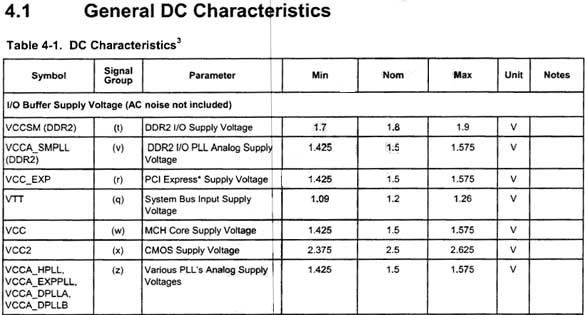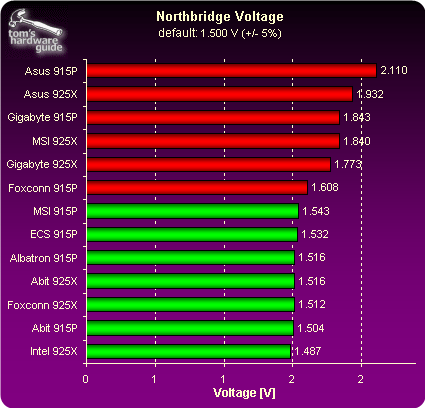Mobo Makers Try Again with Intel's 925X and 915P Chipsets
Test System
| Intel Processors (Socket 775) | |
|---|---|
| Pentium 4 Processor 560 (3.6 GHz, 12-16/1024 kB) | |
| Memory | |
| DDR2-533 | 2x 512 MB PC4300 CrucialTimings: CL 4.0-4-4-12Voltage: 1.8 V |
| Common Hardware | |
| Sound Card | Terratec Aureon 7.1 Space96.00 kHz sample rate |
| Graphics CardPCIE | NVIDIA Reference CardGPU: NVIDIA Geforce 6800 Ultra, 400 MHz Chip ClockMemory: 256 MB DDR-SDRAM, 550 MHz Chip Clock |
| Hard Drive (Intel System) | Intel FW82801ER ICH6FR2 x SATA Maxtor 7B250S00 (Raid 0)250 GB / 16 MB Cache / 7200 rpm |
| DVD/CD-ROM | MSI MS-8216D 16x DVD |
| Software | |
| Intel Chipset Install Utility | 6.0.1.1002 |
| Intel RAID Drivers | Application Accelerator 4.1.0.6325 |
| Nvidia Graphic AGP and PCIE | Detonator 61.45 |
| VIA Chipset | VIA Hyperion 4 in 1 V4.51 |
| DirectX | Version: 9b |
| OS | Windows XP Professional, Build 2600 Service Pack 1 |
Overclocking: Only With Increased Northbridge Voltage
Overclocking the new Intel chipsets cannot be done in a snap. This is demonstrated by the fact that almost none of the manufacturers are able to operate their boards significantly above the normal 200 MHz. One of the key methods is to increase the supply voltage of the MCH chip. Both the 915P and the 925X work according to specification with 1.5 V (see above). The range from 1.425 to 1.575 V is within the tolerance. What the manufacturers presented to us for the test was in some cases higher than the Intel specification. The following table summarizes our measurement results:
Get Tom's Hardware's best news and in-depth reviews, straight to your inbox.

Patrick Schmid was the editor-in-chief for Tom's Hardware from 2005 to 2006. He wrote numerous articles on a wide range of hardware topics, including storage, CPUs, and system builds.

